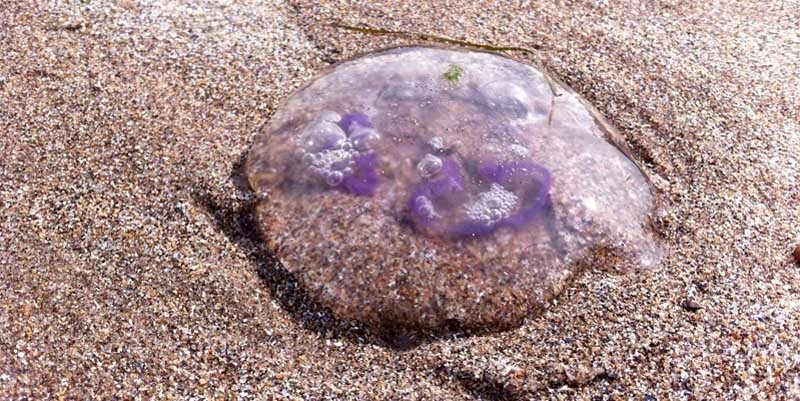Last winter could be directly responsible for turning coastal seas into a “jellyfish soup,” a St Andrews expert has claimed.
Large numbers of the organisms have been spotted in waters off the east coast in recent weeks but nobody has been able to explain the sudden explosion in jellyfish numbers.
Chad Widmer, who is studying jellyfish life cycles for part of his PhD at St Andrews University, believes the answer may lie in the weather that brought Scotland to a standstill last winter.
A former member of the US Army, Mr Widmer ran the jellyfish gallery at Monterey Bay Aquarium in California for 10 years and is an expert on the creatures. Mr Widmer said evidence shows there is a direct correlation between winter temperatures and summer jellyfish numbers.
“Jellyfish numbers peak around the middle of summer and around September they disappear,” he said. “But then every seven to 10 years you see more and some years there seem to be less.
“The thing it seems to correlate to is a cold winter.”
Mr Widmer explained that a fertilised jellyfish egg turns into a polyp, a sea anemone-like creature that attaches itself to rocks on the seabed. This then reproduces asexually, creating the larva that grows into an adult jellyfish.
He said the colder the temperature of the sea surface, the more conducive it is to the polyps budding and creating more jellyfish.
“A cold winter leads to an increase in jellyfish production things that happened six months ago are having an effect now,” said Mr Widmer.
The increased number of jellyfish blooms spotted in coastal waters has prompted the Marine Conservation Society to ask beachgoers to take part in a survey of jellyfish numbers to learn more about why their numbers are increasing. They believe a range of other factors may also be contributing to a rise in numbers.
“There is strong evidence that jellyfish numbers are increasing around the world, including UK seas, and these increases have been linked to factors such as pollution, over-fishing and possibly climate change,” said MCS biodiversity programme manager Peter Richardson.
Species usually seen in British waters are the barrel, moon, compass, blue and lion’s mane jellyfish. Anyone who takes part in the survey is urged not to touch the jellyfish as some found in British waters can sting, although none fatally.Anyone who wants to report a sighting should visit www.mcsuk.org.
